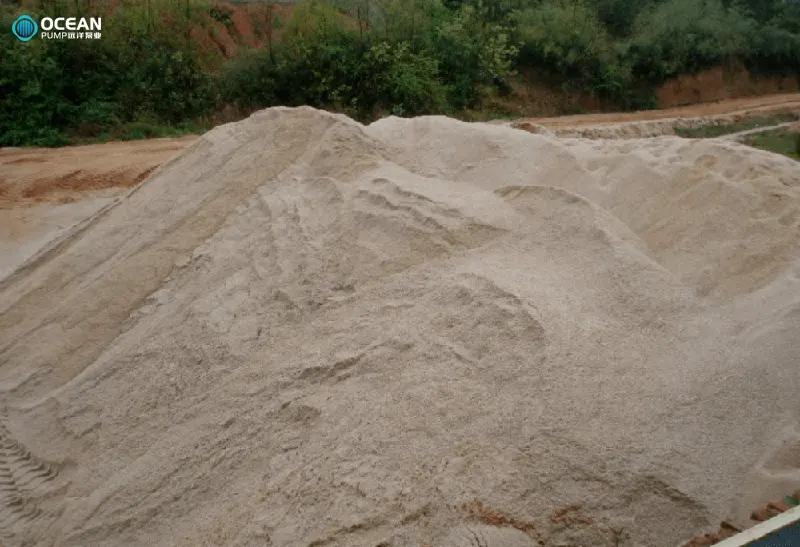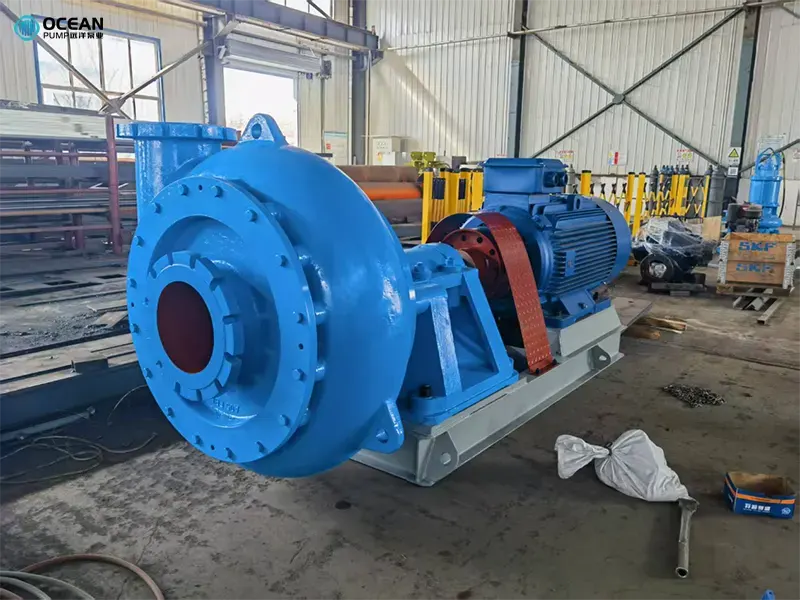Influence Mechanism and Optimization Strategies of Transport Medium Characteristics on the Delivery Distance of Sand Pumps
In industrial engineering fields such as dredging, mining, metallurgy, and chemical engineering, sand pumps play a core role in transporting solid-liquid mixed media (such as sediment, mineral slurry, tailings, coal slurry, etc.). In practical engineering, problems such as "difficulty in meeting the designed delivery distance, high operating energy consumption, and frequent pipeline blockages" often occur. The root cause usually lies in the characteristics of the medium, which are the most critical influencing factors. From the perspective of engineering practice, this paper analyzes the mechanism by which medium characteristics affect the delivery distance and provides directly implementable optimization solutions.

I.Four Core Factors of How Medium Characteristics Affect Delivery Distance
1. Particle Settlement Velocity
Solid particles naturally sink due to their density being greater than that of the liquid, and their settlement velocity (vs) directly determines the stability of the transportation system.
Popular formula:
- Fine particles ( < 0.1mm): The settlement velocity is proportional to the square of the particle diameter.
vs (particle size) * (particle density - liquid density)
- Coarse particles ( > 0.5mm): The settlement velocity is proportional to the square root of the particle diameter.
| Mineral Type | Typical Particle Size (mm) | Density (kg/m³) | Settlement Velocity (m/s) |
| Coal Powder | 0.1 | 1350 | 0.01-0.03 |
| Quartz Sand | 0.5 | 2650 | 0.10-0.15 |
| Iron Concentrate | 0.3 | 4800 | 0.20-0.25 |
| Clay Particles | 0.05 | 2200 | 0.005-0.008 |
2. Critical Flow Velocity of Liquid
To prevent particle deposition, the flow velocity in the pipeline must reach the critical flow velocity (vc). Simplified empirical formula:
$$ Vc \approx 1.3 \times \sqrt{pipe diameter \times particle density difference} $$
Example: For a DN200 pipeline transporting iron concentrate (density difference 3800 kg/m³), the critical flow velocity is approximately 1.8 m/s.
3. Concentration and Viscosity of the Mixture
When the concentration exceeds 30%, the viscosity of the mixture rises sharply, and the flow resistance doubles.
High-viscosity media require higher head but will reduce pump efficiency.
4. Corrosion and Wear of the Medium
- Acidic media (pH < 4): Can corrode the pump body by 2-3 mm per year.
- Hard particles (such as quartz sand): The wear rate is 5-10 times that of soft particles.
II. On-Site Engineering Problems and Solutions

1. Analysis of Typical Problem Cases
Case Background: A gold mine tailings transportation system (selected Ocean 200DN-70, two units in series)
- Designed target: Delivery distance 4.5 km, concentration 30%
- Actual performance: Blockage occurred after only 3.2 km of transportation, and the pump impeller was replaced every six months
Causes of the problem:
1. The gold mine particles have a high density (4200 kg/m³), and the settlement velocity reaches 0.18 m/s.
2. The actual flow velocity is 1.2 m/s, lower than the critical flow velocity of 1.5 m/s.
3. A 10 cm thick sediment layer formed at the bottom of the pipeline.
Optimization plan:
- Reduce the pipe diameter: Change from 250 mm to 200 mm to increase the flow velocity to 1.8 m/s.
- Upgrade materials: Use Cr28 high-chromium cast iron for the impeller, extending its service life by 4 times.
- Intelligent control: Install a frequency converter to automatically reduce the speed for energy saving during low-concentration periods at night.
Reform effects:
- Delivery distance increased to 4.7 km
- Annual maintenance cost reduced by 65%
III. Optimization Strategies - Keeping Particles "Suspended" and Pumps "Long-Lived"
1. Design Stage: Accurate Calculation
| Key Parameter | Calculation Formula (Simplified Version) | Application Example |
| Critical Flow Velocity | $1.3\sqrt{D(\rho_p - \rho_f)}$ | DN250 pipeline transporting iron ore sand requires ¡Ý2.0 m/s |
| Minimum Pipe Diameter | $D_{min} = 0.25\frac{Q}{v_c}$ | Select a 200 mm pipe diameter when the flow rate is 100 m³/h |
| Pump Power Estimation | $P = 0.0027QH\rho$ | 22 kW is required for a flow rate of 50 m³/h and a head of 60 m |
2. Operation Stage: Dynamic Regulation
- Safety threshold for flow velocity: Actual flow velocity ¡Ý 1.3 ¡Á critical flow velocity
- Pulsed cleaning technology: Increase the speed to 1.8v_c every 4 hours and continue for 3 minutes to flush away deposits
- Online monitoring system: Install pipeline vibration sensors + ultrasonic concentration meters
3. Material Upgrade Solutions
| Component | Recommended Material | Service Life Compared to Ordinary Steel | Applicable Scenarios |
| Impeller | High-chromium cast iron (Cr28) | 3-5 times | High-wear mineral slurry |
| Pump Shell Lining | Rubber lining | 8-10 times | Corrosive media |
| Pipeline Elbow | Silicon carbide ceramic composite | 10-15 times | High-speed impact areas |
IV. Future Technology Outlook
- Intelligent settlement early warning system: Predict sedimentation risks through AI algorithms and adjust the flow velocity in advance.
- Anti-sedimentation additives: Develop nanoscale suspending agents to make particles "automatically suspended".
- Ultra-wear-resistant materials: Such as titanium carbide coatings, which can extend the service life of impellers to more than 10 years.
Appendix: On-Site Problem Quick Troubleshooting Table
| Phenomenon | Possible Cause | Emergency Measure |
| Increased pipeline vibration | Uneven flow velocity caused by bottom sedimentation | Immediately increase the speed to 1.5v_c for flushing |
| Sudden increase in pump pressure | Blockage in the outlet pipeline | Stop the machine and flush in the reverse direction |
| Continuous decrease in flow rate | Reduced efficiency due to impeller wear | Check the impeller clearance and replace it |
Through scientific design, intelligent regulation, and material innovation, the delivery distance and reliability of impurity sand pumps can be significantly improved, providing a solid guarantee for dredging projects and industrial production.
-
WhatsApp
-
E-MailE-Mail:oc@tsbeng.com
-
WeChatWeChat:yychen19







